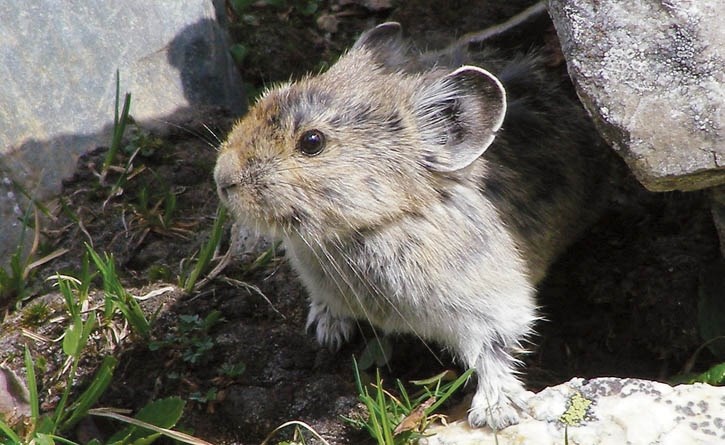BANFF – Parks Canada is worried for native snowshoe hares and pikas in Banff National Park now that a fatal rabbit disease has been discovered in the feral rabbit population in neighbouring Canmore.
Rabbit hemorrhagic disease (RHD) – a highly contagious and lethal viral disease of rabbits that led to a major outbreak in Calgary this fall – was confirmed in Canmore’s rabbits earlier this month when at least two carcasses tested positive for the disease.
RHD is specific to lagomorphs – rabbit and hare species – which usually become sick within one to five days after being exposed to the virus. Death is common after a short period of illness, although rabbits may also die suddenly without any signs.
Officials say the strain of rabbit hemorrhagic disease identified in Canmore, RHDV2, has been found to infect and kill some species of native lagomorphs in other jurisdictions.
“Banff National Park does not have an introduced domestic lagomorph population as is prevalent in Canmore,” said Karilynn Thompson, a spokesperson for Banff National Park in an emailed statement. “To date, no cases of RHDV2 have been discovered in Banff National Park.”
This strain of the rabbit hemorrhagic disease virus emerged in 2010 and now has global distribution.
Cases have been confirmed in a small number of native mountain cottontails in Alberta.
Thompson said most of Alberta’s native lagomorphs are now presumed to be susceptible.
“As such, concern exists for all lagomorph species found in Banff National Park including snowshoe hares and pikas,” she said.
Parks Canada asks that all sightings of animals either dead or in distress should be reported to Banff National Park dispatch at 403-762-1470.
Thompson said those that discover a dead hare or pika – or any dead wildlife for that matter – are asked to refrain from touching the animal and to call dispatch as soon as possible.
“Ensure to record the exact location of the animal and provide as many details to the dispatch operator,” she said.
RHD was reported for the first time in wild native North American rabbits and hares in March and April 2020 in the southwestern United States, first detected in New Mexico before spreading throughout several states.
Affected species included the desert cottontail, mountain cottontail, black-tailed jackrabbit and antelope jackrabbit.
In addition, the infection spilled over to domestic populations.
The virus has been confirmed in a few places in Alberta, including the Taber area in spring 2021, a small outbreak in Edmonton in fall 2021 and then a larger outbreak in the feral domestic rabbit population in Calgary this fall.
In mid-November, Canmore residents began to notice feral rabbits were dropping dead in various residential neighbourhoods without explanation.
Three rabbit carcasses were sent to the University of Calgary for testing, but one was too badly scavenged by ravens to be valuable for post-mortem examination. The first carcass was located on Bow Valley Trail on Dec. 1.
Jennifer Davies, director of the diagnostic services unit and associate professor at the University of Calgary’s faculty of veterinary medicine, said the spread of rabbit hemorrhagic disease into Canmore’s feral rabbit population will likely cause a “considerable mortality event”.
“As we have seen in other locations in North America, this is likely a disease that has now been introduced into a naive population, which probably doesn’t have any immunity to this disease,” she said.
“This particular viral disease in rabbits and hares is highly contagious and highly fatal.”
While Canmore feral rabbits are considered an invasive species and are trapped and euthanized, the concerns in Canmore centre more on the risk to native lagomorphs and residents’ pet bunnies.
The Town of Canmore is asking residents to report any hare carcasses they may across to [email protected].
Meanwhile, the Town of Canmore’s feral rabbit trapping program undertaken by an independent contractor is ongoing.
Feral rabbits, given their ability to draw large carnivores into town in search of a meal and are a non-native species in Canmore, were raised as a serious concern by the Bow Valley human-wildlife coexistence task force in 2018.
Since the municipally approved the trapping program in 2012, $587,000 has been spent on removal of 2,130 feral rabbits, at a cost of $275 per rabbit.



